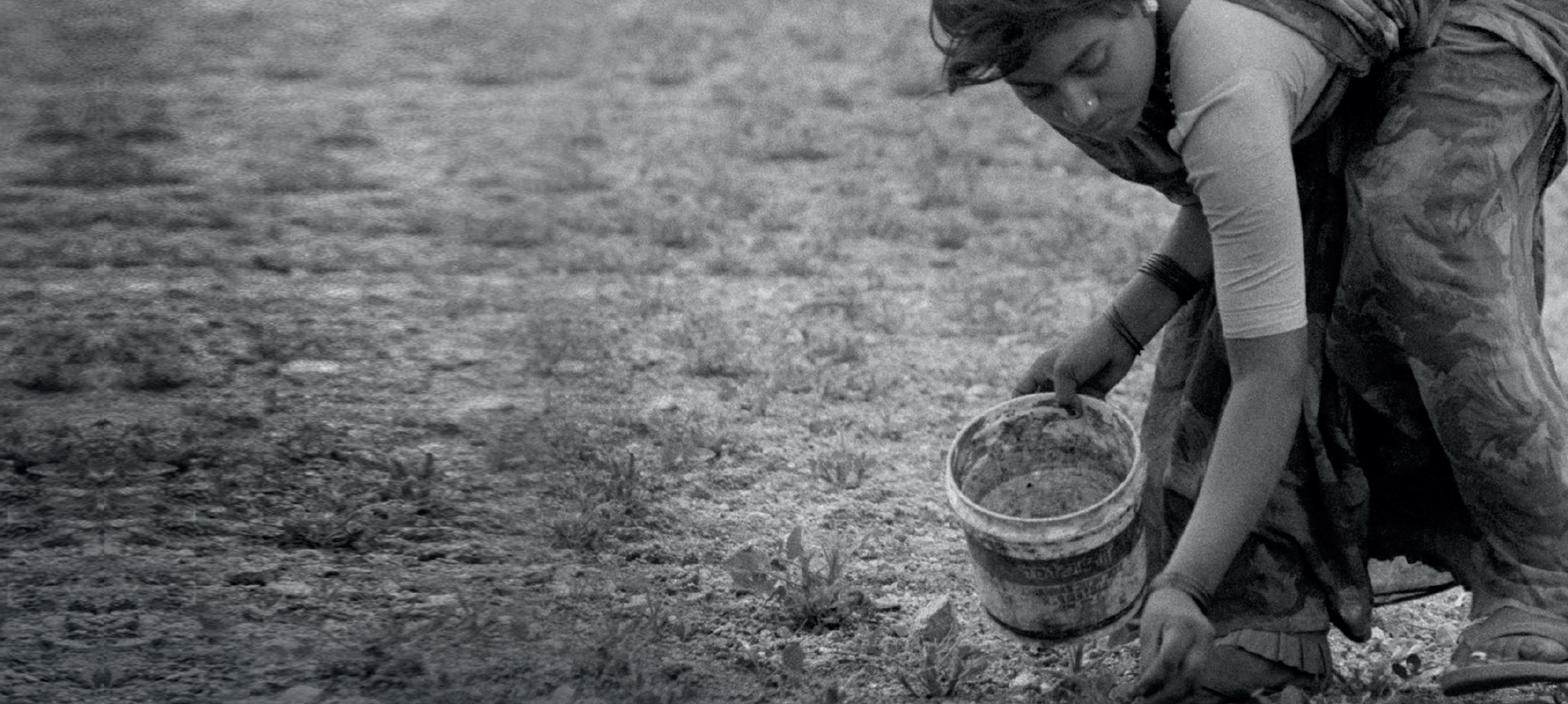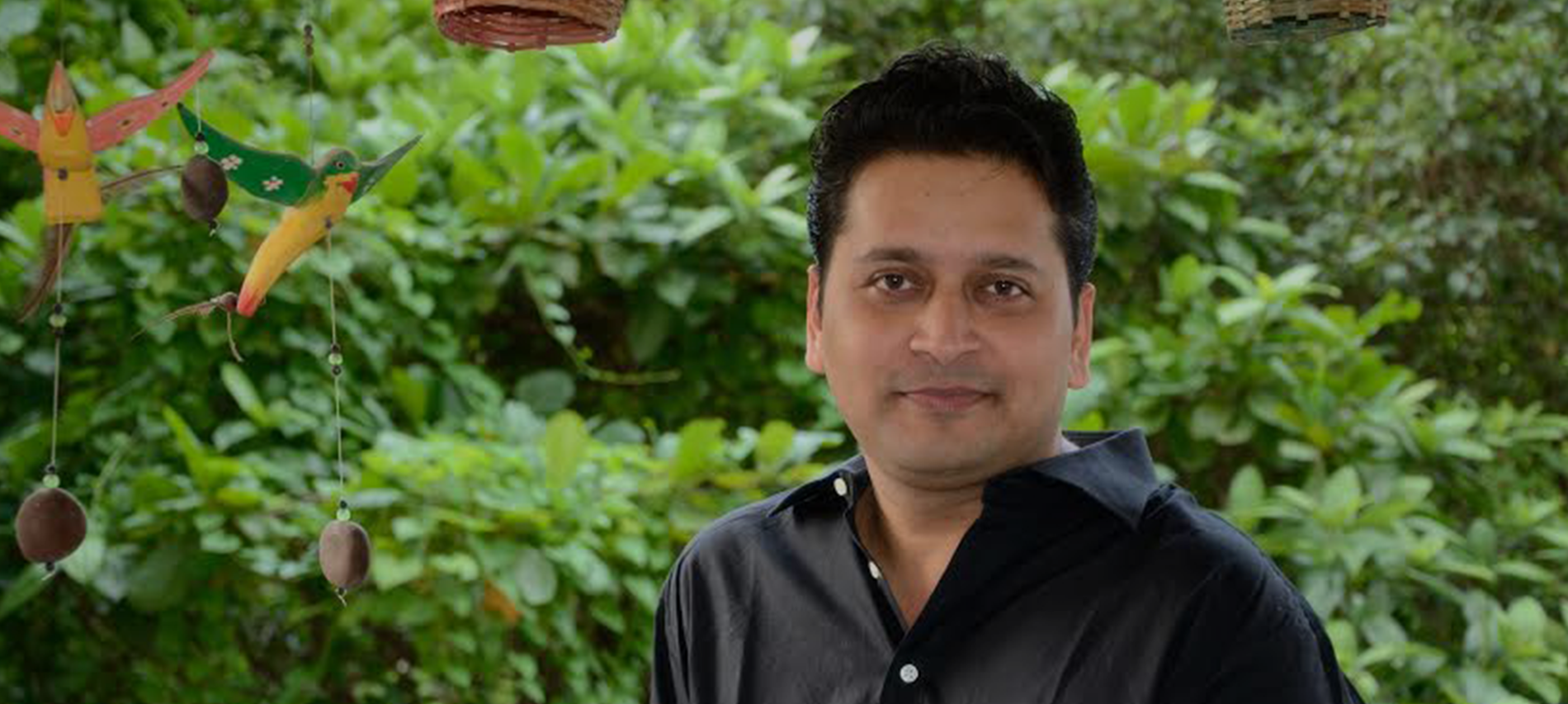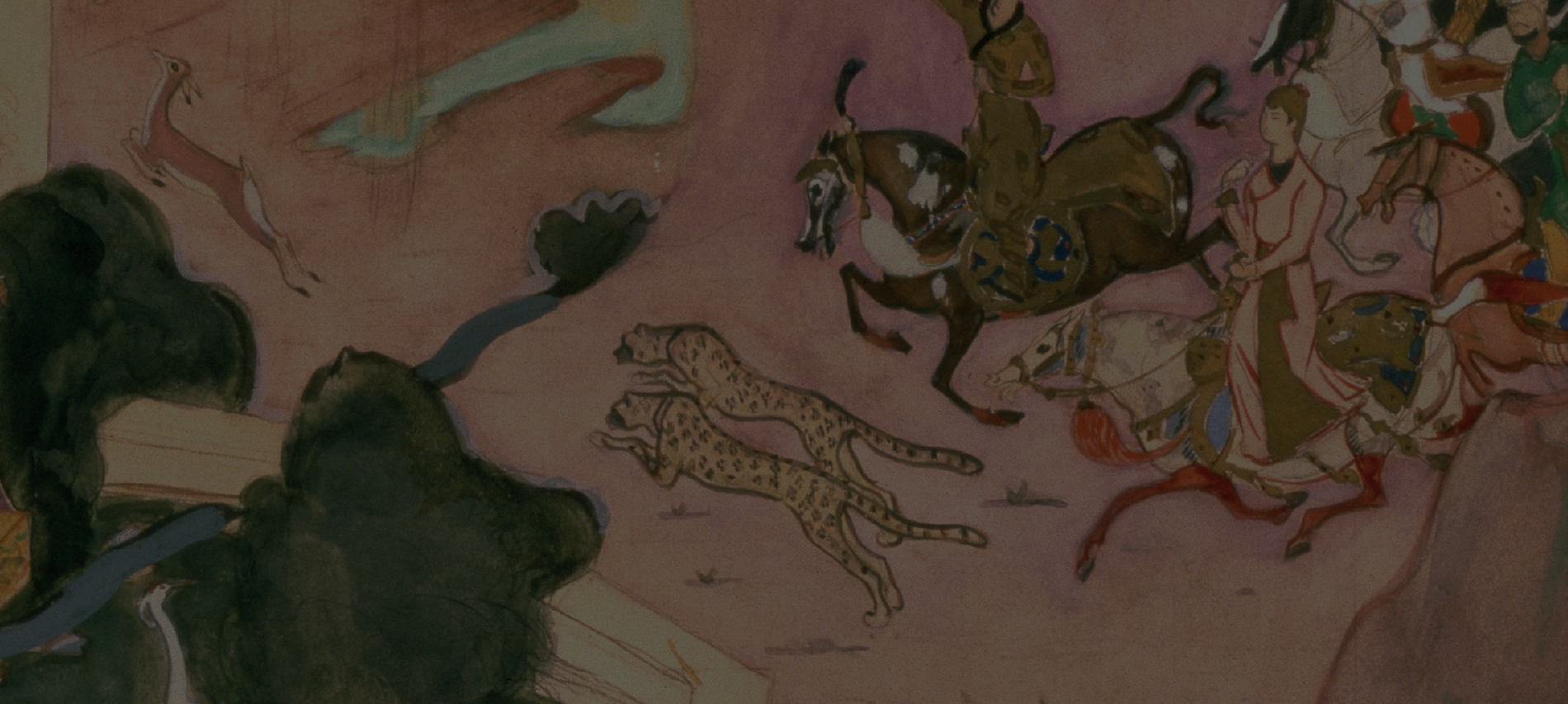Palagummi Sainath has been a journalist and reporter for thirty-seven years and has covered rural India full time for twenty-five of those. His book, Everybody Loves a Good Drought, is the established classic on rural poverty in India. Twenty years after publication, it remains unsurpassed in the scope and depth of reportage, providing an intimate view of the daily struggles of the poor and the efforts, often ludicrous, made to uplift them.
Here’s an excerpt from the new introduction to this critically acclaimed work.
———————————-
One of the first things people who have read Everybody Loves a Good Drought ask me is: ‘How did you come to give this book its name?’ I didn’t. I just grabbed the idea from Ramji Lakhan. He was a peasant activist who organized agricultural labourers to fight for their rights in Palamu (then in Bihar, now in Jharkhand).
‘We have a great drought going here,’ he told me. ‘The big people are making much money out of it. And the Block Development Officer (BDO) has gone to harvest the Third Crop.’
I was mystified. ‘I know of the kharif crop, harvested in autumn after the rainy season. And I know of the rabi, sown in winter and harvested in spring. But what is this Third Crop?’
‘Drought relief,’ said Ramji. He’d been hoping I would ask. ‘The money that comes in as relief makes the powerful richer than they were. It’s quite a good business. We like a good drought here.’
He called the BDO the BTDO, or Block The Development Officer. ‘No work takes place unless he gets his cut.’ But he did not use the term Third Crop in English. He said teesri fasl. And that remains the title of the Hindi edition of this book.
Another common question: ‘Have things changed in these districts since you wrote this book?’ Yes. Not always for the better, though. The women stone-quarry workers of Pudukkottai, who drew inspiration from their strength as a collective, changed their world for the better. For many others living in the regions the book’s stories come from, things got a lot worse. For a reason Ramji Lakhan understood very well even back then: growing inequality.
An India was emerging where new inequalities were feeding into old ones. Not by accident, but driven by human agency. Even in the year 2000, according to Credit Suisse’s Global Wealth Databook, the top 1 percent of the Indian population held 36.8 percent of the total household wealth. By 2016, their share had risen to 58.4 percent, far ahead of their counterparts in the United States, whose share of wealth in their nation was 42.1 percent.
That also means the top 1 percent of Indians held a greater share of wealth that year within our nation than the top 1 percent of Americans ever did within their own. The same year, the Databook shows, the bottom 10 percent of Indians saw their share fall from 0.1 to -0.7 percent––suggesting that many millions whose assets were far lower than their liabilities were sinking further into debt.
The next two deciles, just above the -0.7 group, recorded shares of 0.2 and 0.5 per cent, respectively. Club those three together and it means the bottom 30 percent of the Indian population own next to nothing.
In the year 2000, Forbes listed nine Indians who were dollar billionaires. In 2011–12, when our Socio Economic and Caste Census found that the main breadwinner in 75 percent of rural households take home less than Rs 5000 a month, Forbes said we had fifty-five dollar billionaires. This year, India logged 101 dollar billionaires in the Forbes 2017 list. We now rank number four in the world in that distinguished line-up. But we also rank 131 in the United Nations Human Development Index.
This is where we needed the media to ‘signal the weakness in society’. Instead, they celebrated this inequality. Unique success stories, and those on super celebrities, took centre stage. And we focused on how wonderful we were. A small part of the population surely did very well. Clinging to our delusions meant trashing the integrity of the data we gathered on ourselves. We did this with poverty numbers. We do it with farm suicide data.

Tag: featured
The Beauty of the Valmiki Ramayana by Bibek Debroy
By Bibek Debroy:
There are many versions of the Ramayana and not all are in Sanskrit. However, the Valmiki Ramayana, composed by the sage Valmiki in Sanskrit, is clearly the oldest. It is the oldest surviving version. Perhaps the story was already known and Valmiki simply retold it in the form of a beautiful composition. Therefore, he may not have been the first person to tell the story. We shall never know. Nor is it important to know that to appreciate the Valmiki Ramayana.
Indeed, we are not quite sure about what Valmiki composed. In those days, there was no writing. In the process of oral transmission, subsequent composers added their own embellishments. Today, the text of the Sanskrit Valmiki Ramayana has around 24,000 shlokas, a shloka being a verse. These 25,000 shlokas are distributed across seven kandas – Bala Kanda (Book about Youth), Ayodhya Kanda (Book about Ayodhya), Aranya Kanda (Book of the Forest), Sundara Kanda (Book of Beauty), Yuddha Kanda (Book about the War) and Uttara Kanda (Book about the Sequel). Kanda refers to a major section or segment and is sometimes translated into English as Canto. “Canto” sounds archaic, “Book” is so much better. This does not mean the kanda-wise classification always existed. For all one knows, initially, there were simply chapters. Most scholars agree Uttara Kanda was written much later. It doesn’t quite belong. This isn’t only because of the content. It is also because of the texture of the text, the quality of the poetry. It is vastly inferior. To a lesser extent, one can also advance similar arguments for the Bala Kanda. Therefore, the earlier portions of the Valmiki Ramayana were probably composed around 500 BCE. The later sections, like the Uttara Kanda, and parts of the Bala Kanda, were probably composed around 500 ACE. It isn’t the case that all later sections are in Uttara Kanda.
The translation published by Penguin in three volumes is of the Valmiki Ramayana. It is necessary to stress this point. The Ramayana story is so popular that one is familiar with people, stories and incidents. That doesn’t necessarily mean those people, stories and incidents occur in the Valmiki Ramayana in the way we are familiar with them, our familiarity based on other versions of the Ramayana story. Even within the Sanskrit Valmiki Ramayana, there are many different manuscripts. Between 1951 and 1975, the Oriental Institute, Baroda, produced a Critical Edition of the Valmiki Ramayana. This translation is based on that Critical Edition, published sequentially between 1958 and 1975. Producing a Critical Edition meant sifting through a large number of manuscripts of the Valmiki Ramayana. The editors had around 2000 manuscripts to work with. It is not that there were significant differences across the manuscripts and broadly, there was a Southern Recension (version) and a Northern one, the latter sub-divided into a North Western and a North Eastern one. The earliest of these written manuscripts dates to the 11th century CE. In passing, the language may have been Sanskrit, but the script wasn’t always devanagari. There were scripts like Sharada, Mewari, Maithili, Bengali, Telugu, Kannadi, Nandinagari, Grantha and Malayalam. The translation published by Penguin is based on the Baroda Critical Edition. To repeat what I have already said, some Ramayana stories and incidents we are familiar with, many not exist in this version.
The Valmiki Ramayana consists of beautiful poetry. Valmiki is the first poet, ad kavi. The story of how it came about is known to most people who are familiar with the Ramayana. The sage Valmiki had gone, with his disciple Bharadvaja, to bathe in the waters of the River Tamasa. There was a couple of curlew birds there, in the act of making love. Along came a hunter and killed the male bird. As the female bird grieved, Valmiki was driven by compassion and the first shloka emerged from his lips. Since it was composed in an act of sorrow (shoka), this kind of composition came to be known as shloka. So the Ramayana tell us. It is impossible to capture the beauty of this poetry in an English translation. As composers, there is quite a contrast between Valmiki and Vedavyasa, the author of the Mahabharata. Both texts are in the form of poetry and both composers were poets, but there the similarity ends. Vedavyasa focuses on people and incidents. Rarely does the Mahabharata attempt to describe nature, even if those sections are on geography. In contrast, Valmiki’s descriptions of nature are lyrical and superlative, similar to Kalidasa. A translation can never hope to transmit that flavor. There is no substitute to reading the original Sanskrit, more so for the Valmiki Ramayana than for the Mahabharata.
As with the Mahabharata, the Valmiki Ramayana is a text about dharma. Dharma means several different things – the dharma of the four varnas and the four ashramas; the governance template of raja dharma, the duty of kings; principles of good conduct (sadachara); and the pursuit of objectives of human existence (purushartha) – dharma, artha and kama. As with the Mahabharata, the Valmiki Ramayana is a smriti text. It has a human origin and composer, it is not a shruti text. Smriti texts are society and context specific. We should not try to judge and evaluate individuals and actions on the basis of today’s value judgements. In addition, if the span of composition was one thousand years, from 500 BCE to 500 ACE, those value judgements also change. Transcending all those collective templates of dharma, there is one that is individual in nature. Regardless of those collective templates, an individual has to decide what the right course of action is and there is no universal answer as to what is right and what is wrong. There are always contrary pulls of dharma, with two notions of dharma pulling in different directions. It is not immediately obvious which is superior. Given the trade-offs, an individual makes a choice and suffers the consequences. Why is there an impression that these individual conflicts of dharma are more manifest in the Mahabharata than in the Ramayana?
The answer probably lies in the nature of these two texts. What is the difference between a novel and a long story, even when both have multiple protagonists? The difference between a novel and a long story is probably not one of length. A novel seeks to present the views of all protagonists. Thus, the Mahabharata is a bit like a novel, in so far as that trait is concerned. A long story does not seek to look at incidents and action from the point of view of every protagonist. It is concerned with the perspective of one primary character, to the exclusion of others.
If this distinction is accepted, the Valmiki Ramayana has the characteristics of a long story. It is Ramayana. Therefore, it is primarily from Rama’s point of view. We aren’t told what Bharata or Lakshmana thought, or for that matter, Urmila, Mandavi or Shrutakirti. There is little that is from Sita’s point of view too. That leads to the impression that the Mahabharata has more about individual conflicts of dharma. For the Valmiki Ramayana, from Rama’s point of view, the conflicts of dharma aren’t innumerable. On that exile to the forest, why did he take Sita and Lakshmana along with him? Was Shurpanakha’s disfigurement warranted? Why did he unfairly kill Vali? Why did he make Sita go through tests of purity, not once, but twice? Why did he unfairly kill Shambuka? Why did he banish Lakshmana? At one level, one can argue these are decisions by a personified divinity and therefore, mere humans cannot comprehend and judge the motives. At another level, the unhappiness with Rama’s decisions led to the composition of alternative versions of the Ramayana. Note that Sita’s questions about dharma remained unanswered. If you are going to the forest as an ascetic, why have you got weapons with you? If the rakshasas are causing injuries to hermits, punishing the rakshasas is Bharata’s job, now that he is the king. Why are you dabbling in this? Note also Rama’s justification at the time of Sita’s first test. It wasn’t about what others would think, that justification came later. The initial harsh words reflected his own questions about Sita’s purity. Thus, Rama’s conflicts over dharma also exist. It is just that in the Valmiki Ramayana, it is about one individual alone.
In conclusion, this translation is an attempt to get readers interested in reading the unabridged Valmiki Ramayana. Having read abridged versions, and there is no competition with those, to appreciate the nuances better, one should read the unabridged. And, to appreciate the beauty of the poetry, one should then be motivated to read the text in the Sanskrit. A translation is only a bridge and an unsatisfactory one at that.
——————————
Bibek Debroy (Tr.) is a renowned economist, scholar and translator. He is also a Research Professor (Centre for Policy Research) and a columnist with Economic Times. His majestic new translation The Valmiki Ramayana, can now be relished by a new generation of readers.

Yes, You Do Need Friends at Work.
Dr. Annie McKee is an advisor to leaders of Fortune 500 companies, governments and NGOs around the globe. Her book, How To Be Happy At Work will deepen our understanding of what it means to be truly fulfilled and effective at work and provides clear, practical advice and instruction for how to get there—no matter what job you have.
Here’s an excerpt.
In this chapter, I will show that having friends at work is critical. When we feel cared for—even loved, as one does in a friendship—and when we belong to a group that matters to us, we are generous with our time and talents because we’re committed to people, not just the job or the company. You will also read about how to build the foundations for friendships in the workplace and how you can improve your relationships at work.
If you like the people you work with, you probably also like your job and your company. If you don’t like them, or if relationships are tense or disrespectful, chances are you don’t look forward to getting up every day to go to work. And it isn’t just that it makes us happy to belong and to have friends. Good relationships lead to good outcomes. This is just as true at work as it is in our families, neighborhoods, and tribes.Unfortunately, that’s not what we’ve learned along the way.
When I ask people, “Do you need to be friends with people at work?” they usually hesitate. Then they rattle off reasons why it’s a bad idea: “I’ve got to keep a distance or I won’t be able to have the tough conversations,” “I might get in trouble,” or “You’ve got to have clear boundaries.” A few come right out and say that it’s dangerous to have friends at work.
Something funny happens, though, when I ask people to describe what they do want in their relationships at work:
“I have to like the people I work with.”
“I want to be myself at work without being afraid that people will shut me out or shut me down.”
“I can’t take risks with people I don’t trust, or when I know they don’t care about me.”
“I want to have fun at work. Sharing a laugh helps me deal with stress.”
Clearly, there’s a disconnect. We think we should have relationships that are distant, polite, and guarded. But we want much more than that. We want to feel safe to be ourselves, we want to enjoy one another, and we want to like people at work. We also want them to like us.
This seems like common sense to me—why wouldn’t we want warm and friendly relationships with people we spend so much time with? Moreover, if we don’t like people (or they don’t like us), it’s going to be hard to find common ground, making it even harder to work through disagreements and conflict. If we suspect that someone’s out for themselves or trying to take advantage of us, we’re not likely to share our ideas or resources. Instead, we will be on guard and hesitant to collaborate. This is not a recipe for success—a lesson David McWilliams learned early in his career.

5 Quotes From Harlan Coben’s New Book That Make it a Must-Read
Harlan Coben is one of the most famous names in the world of thrillers. He is the bestselling author of novels like The Stranger, Home, Fool me once, etc. With over 70 million books in print worldwide, his novels have been published in 43 languages worldwide.
He is back with another spine-chilling gem, Don’t Let Go which revolves around mistaken identities, dark family secrets, and mysterious conspiracies.
Here are five quotes from the book which make it unputdownable.





Don’t wait anymore and pick up this gem now!

5 Things You Didn’t Know About Harlan Coben
Harlan Coben is one of the most well-known names in the thriller genre. With over 70 million books in print worldwide, his books have been number one bestsellers in over a dozen countries. Here are 5 things you should know about the bestselling author.
Here are 5 things you should know about the bestselling author.





How many of these facts did you know?
The Four, An Excerpt
In his book, ‘The Four’, Scott Galloway deconstructs the strategies of the Four that lurk beneath their shiny veneers. He shows how they manipulate the fundamental emotional needs that have driven us since our ancestors lived in caves, at a speed and scope others can’t match.
Here’s an excerpt from the book.
Over the last twenty years, four technology giants have inspired more joy, connections, prosperity, and discovery than any entity in history. Along the way, Apple, Amazon, Facebook, and Google have created hundreds of thousands of high-paying jobs. The Four are responsible for an array of products and services that are entwined into the daily lives of billions of people. They’ve put a supercomputer in your pocket, are bringing the internet into developing countries, and are mapping the Earth’s land mass and oceans. The Four have generated unprecedented wealth ($2.3 trillion) that, via stock ownership, has helped millions of families across the planet build economic security. In sum, they make the world a better place. The above is true, and this narrative is espoused, repeatedly, across thousands of media outlets and gatherings of the innovation class (universities, conferences, congressional hearings, boardrooms). However, consider another view.
Show Me the Trillions
While billions of people derive significant value from these firms and their products, disturbingly few reap the economic benefits. General Motors created economic value of approximately $231,000 per employee (market cap/workforce).20 This sounds impressive until you realize that Facebook has created an enterprise worth $20.5 million per employee… or almost a hundred times the value per employee of the organizational icon of the last century.21,22 Imagine the economic output of a G-10 economy, generated by the population of Manhattan’s Lower East Side.
The economic value accretion seems to be defying the law of big numbers and accelerating. In the last four years, April 1, 2013–April 1, 2017, the Four increased in value by approximately $1.3 trillion (GDP of Russia). Other tech companies, old and new, big and bigger, are losing relevance. Aging behemoths, including HP and IBM, barely warrant the attention of the Four. Thousands of start-ups fly by like gnats hardly worth swatting at. Any firm that begins to show the potential to bother the Four is acquired—at prices lesser companies can’t imagine. (Facebook paid nearly $20 billion for five-year-old, fifty employee instant messaging company WhatsApp.) Ultimately, the only competitors the Four face are . . . each other. Safety in Hatred Governments, laws, and smaller firms appear helpless to stop the march, regardless of the Four’s impact on business, society, or the planet. However, there’s safety in hatred. Specifically, the Four hate each other. They are now competing directly, as their respective sectors are running out of easy prey.
Google signaled the end of the brand era as consumers, armed with search, no longer need to defer to the brand, hurting Apple, who also finds itself competing with Amazon in music and film. Amazon is Google’s largest customer, but it’s also threatening Google in search—55 percent of people searching for a product start on Amazon (vs. 28 percent on search engines such as Google).25 Apple and Amazon are running, full speed, into each other in front of us, on our TV screens and phones, as Google fights Apple to be the operating system of the product that defines our age, the smartphone. Meanwhile, both Siri (Apple) and Alexa (Amazon) have entered the thunderdome, where two voices enter, and only one will leave. Among online advertisers, Facebook is now taking share from Google as it completes the great pivot from desktop to mobile. And the technology likely creating more wealth over the next decade, the cloud—a delivery of hosted services over the internet—features the Ali vs. Frazier battle of the tech age as Amazon and Google go head-to-head with their respective cloud offerings. The Four are engaged in an epic race to become the operating system for our lives. The prize? A trillion-dollar-plus valuation, and power and influence greater than any entity in history.
So What?
To grasp the choices that ushered in the Four is to understand business and value creation in the digital age. In the first half of this book we’ll examine each horseman and deconstruct their strategies and the lessons business leaders can draw from them. In the second part of the book, we’ll identify and set aside the mythology the Four allowed to flourish around the origins of their competitive advantage. Then we’ll explore a new model for understanding how these companies exploit our basest instincts for growth and profitability, and show how the Four defend their markets with analog moats: real-world infrastructure designed to blunt attacks from potential competitors. What are the horsemen’s sins? How do they manipulate governments and competitors to steal IP? That’s in chapter 8. Could there ever be a Fifth Horseman? In chapter 9, we’ll evaluate the possible candidates, from Netflix to China’s retail giant Alibaba, which dwarfs Amazon on many metrics. Do any of them have what it takes to develop a more dominant platform?

Things You Should Know About Pankaj Dubey
Pankaj Dubey is the bestselling author of three novels. He is also a film-maker. His recent novel Love Curry is about three flatmates in London who fall in love with the same girl. They become arch rivals, but when their worlds turn topsy-turvy, they have no one but each other to turn to, learning that love is as much about letting go as it is about possessing.
Here are six things you should know about the author:






Catch Pankaj Dubey’s quirky and intense novel Love Curry.

9 lines that Show the Anguish Behind Mental Illness
Shreevatsa Nevatia’s How to Travel Light is a candid take at his life after he was diagnosed as bipolar at twenty-three, and how he struggled for a decade, fighting a cycle of depression and euphoria.
Here are a few lines from the book which display this struggle:









Combat your inner anguish with this book.

Marvellous Thieves, An Excerpt
Paulo Lomas Horta in ‘Marvellous Thieves’ introduces the poets, scholars, pilgrims and charlatans who made unacknowledged contributions to Arabian Nights.
Here’s an excerpt from the book.
On March 25, 1709, a visit by Antoine Galland to the Paris apartment of his friend Paul Lucas yielded a discovery that would shape the literary legacy of the first French translator of the Thousand and One
Nights. Lucas, a collector of treasures for the court of Louis XIV, was well known for his travels in the Middle East, and his apartment was recognized as one of the marvels of the French capital. Listed in early eighteenth- century guidebooks as a place to view antiquities and other rare objects from Greece, Egypt, and Asia Minor, it drew scholars, collectors, and curiosity seekers of all kinds. Over the course of his journeys in the Mediterranean and the Ottoman Empire, Lucas had amassed enough medallions, coins, engraved stones, and gems to fill six rooms.
The herbier in his apartment contained some 3,000 varieties of plants taken from foreign locations, and the droguier was equally impressive. One visitor to the apartment in the 1730s described a remarkable sculpture of the goddess Ceres that Lucas had acquired in Athens forty years earlier. Ten feet tall, the figure was made of Oriental jasper and plated with bronze, and in Paris she enjoyed the company of many other bronzes from Greece, Macedonia, and the Levant, as well as two Persian sculptures of nude sages at prayer. Among such historically valuable pieces, stranger artifacts were scattered: petrified mushrooms, seahorses, and mummified birds encased in bronze.
Arriving at this cabinet of curiosities in 1709, Galland found an even greater treasure awaiting him: a young Maronite traveller from Aleppo by the name of Hanna Diyab who, he reported, “[knew] some very beautiful Arabic tales.” While Lucas may have viewed Diyab as just another Oriental curiosity to be displayed at the French court, Galland saw in him a solution to a frustrating predicament. After translating all the stories in his incomplete Arabic manuscript of the Thousand and One Nights, Galland was in need of more, and he had now found a storyteller who could fill the gap. In a sequence of twelve meetings between May 5 and June 2, 1709, Diyab related sixteen fantastic stories to Galland, who chose to add ten of these to the final three volumes of his French version of the Arabian Nights. Th ese storytelling sessions were the origin of some of the most famous of the Arabian Nights tales— including “Ali Baba and the Forty Thieves” and “Prince Ahmad and the Fairy Peri- Banu”— and represent a lasting contribution to a story collection that has taken its place in the canons of world literature.
It was not the first time that Galland had benefitted from the curiosities collected by Lucas. Despite his lack of respect for Lucas’s abilities as a scholar, Galland found his collection of coins very useful in his own numismatic research, and he tried to gain access to lists or drawings of these from common acquaintances when his younger colleague was unwilling to share. Just as Galland borrowed coins to add entries to his numismatic dictionary, he would borrow Diyab to add stories to his version of the Arabian Nights. Considering his impact on the first French edition of the Arabic story collection, the Syrian storyteller could be judged the most valuable curiosity Lucas ever brought back from the Levant.
Since the publication of Les mille et une nuits, Galland’s French version of the Arabian Nights, in twelve volumes from 1704 to 1717, Galland has been credited as the first “author” of the collection in European letters, and as a crucial contributor to the emergence of the “Oriental tale” in French. Not only did he translate the 282 nights of stories in his Arabic manuscript in elegant Parisian prose, but he is credited with making a more substantial contribution to the story collection by lovingly adopting and adapting the tales that he heard from Diyab in 1709.
These stories, called the “orphan tales” because (with one exception) they have no known Arabic manuscript source, are seen as central to Galland’s achievement as a translator of the Arabian Nights. In this portion of his story collection, Galland’s work was no longer simply translation or adaptation; it represented “creation.”
Jean- Paul Sermain, one of the editors of the most recent edition of Galland’s Les mille et une nuits (2004), states the case most persuasively. He argues that Galland, working from his sparse notes on Diyab’s oral per for mances, created tales of ordinary characters caught up in extraordinary predicaments. Drawing on French literary conventions, he invented dialogues and descriptions and gave narrative coherence to the tales. Characters were developed with more sympathy, and moral lessons were highlighted. In the hands of Galland, the orphan tales of Diyab spoke of the superiority of the hero of humble origins and the need to behave decently in difficult circumstances. To fill out his meager notes, the French translator drew on his scholarly knowledge and his own travels of the Orient to imagine the fabulous details of voyages, palaces, and magical objects. Sermain argues that these orphan
tales teach the reader how to read the Arabian Nights as a whole. In the space between the French fairy tale and the Arabic story cycle, Galland seemed to fashion a new genre— that of the “Oriental tale.”

Shobhaa De talks about risks and her pretty exhilarating life, An Excerpt
Shobhaa De’s writing exudes an empathy that has turned several of her books into life manuals for generations of Indians. Her keen wit spears and spares none, least of all herself. Her book ‘Seventy and to hell with it’, she says is a gift to herself for entering into the seventh decade of life.
Here’s an excerpt from the book where she talks about risks and her experiences with them.
Here I am, looking back on seven decades of a life that has been pretty exhilarating. Yes, of course I have messed up. But even those mess-ups have taught me vital lessons—in survival, coping, collapsing, undoing, rejoicing. Most of these lessons have come from allowing myself to be open to everything life is throwing my way—good stuff, bad stuff, indifferent stuff. This is what I frequently tell my children when they are despairing. If you remain yourself and stay receptive to what’s happening around you, you will pickup signals that will provide most of the answers you seek.
Perhaps not instantly, but the answers will come.
When I was a teenager, I used to take every aspect of my life for granted, without questioning what was going on around me. In a way, this attitude protected me and spurred me on to take crazy chances, often with my life. I thought nothing of jumping in and out of rapidly moving local trains which I took to and from school. Of course, I was showing off my daredevilry, since there was always a crowd at Churchgate station. But those adrenaline-fuelled seconds when I tried to
make it inside the compartment without losing my footing gave me such a rush it made that lunatic risk very attractive. Today, I can ask myself, ‘What on earth were you thinking? Or proving?’ I still don’t have an answer that satisfies me. Perhaps I was testing myself. All I know is, danger and dangerous situations still attract me. I have never opted for ‘safe’ when there was ‘risky’ staring at me. It’s a personality trait, or a character flaw. God knows. Show me two scenarios, one that is controlled and the other that’s insane, and I’ll instinctively opt for the latter. This worries my husband and children, but deep within, even I know half of this is nothing more than posturing. Confronting fear is just a part of it.
I am in the process of identifying my biggest fears as I key this in. What do most human beings fear the most? I’d say it is loss. Loss of a loved one, loss of face, loss of security, loss of health, loss of identity, loss of mental and physical faculties. Loss of one’s own life. From this abbreviated list, I would say, for a wife and mother, there can be no greater loss than the loss of a child and spouse. Nothing prepares you for it. Nothing can. Sages advise us to start gearing ourselves up for such an eventuality from the time marriage vows are taken to that dreaded moment you are forced to come face-to-face with tragedy. Meditate, they tell you. Pray. Ask God to provide succour. Does any of this help you to deal with a wound that can never be healed? I don’t know. I hope I am never tested. But it is this fear of losing a beloved that is at the root of all other fears. As a child, you fear losing your parents. As a grown-up, you fear losing your child. Conquering this fundamental fear is what drives us to face other fears.
When I think of all those reckless stunts I performed in school and college (most of which were unknown to my trusting parents), did I stop to think what the repercussions would have been on so many lives had something terrible happened to me as I hung out of a fast train, tempting fate
every second day? I continued to ride racing bikes down crowded roads, clinging on to the handle of a public transport bus for additional speed. I crashed cars that didn’t belong to me when I was grossly underage, after persuading the children of the owners to steal the car keys. I lied about my adventures in local trains (ticketless travel being the more innocent one) to my mother, who believed I was at a school picnic when I was actually bunking school and loitering on distant beaches. What if any of these silly jaunts had backfired? Point is, they didn’t. I was fortunate.
Risk-taking is something I enjoy immensely. It comes naturally to me. I like stepping into the unknown and seeing where those steps take me. This is true whether it involves love and romance in my youth or professional choices later in life. My decisions were mainly impetuous (‘immature’ is how my father described them) and spontaneous. Where did this behaviour pattern come from? Certainly not from my home environment, which was conservative, conformist and solidly, comfortingly middle class. I appreciated anarchy and chaos far more than control and comfort. This troubled my parents a great deal, and I must have given them countless sleepless nights during those restless years when I couldn’t wait to get out into the big, wicked world, the one beyond my traditional Maharashtrian home, and taste the myriad exotic flavours waiting to consume me, in Turkey, Brazil, Japan, just about anywhere. But where was I stuck? At home!

















